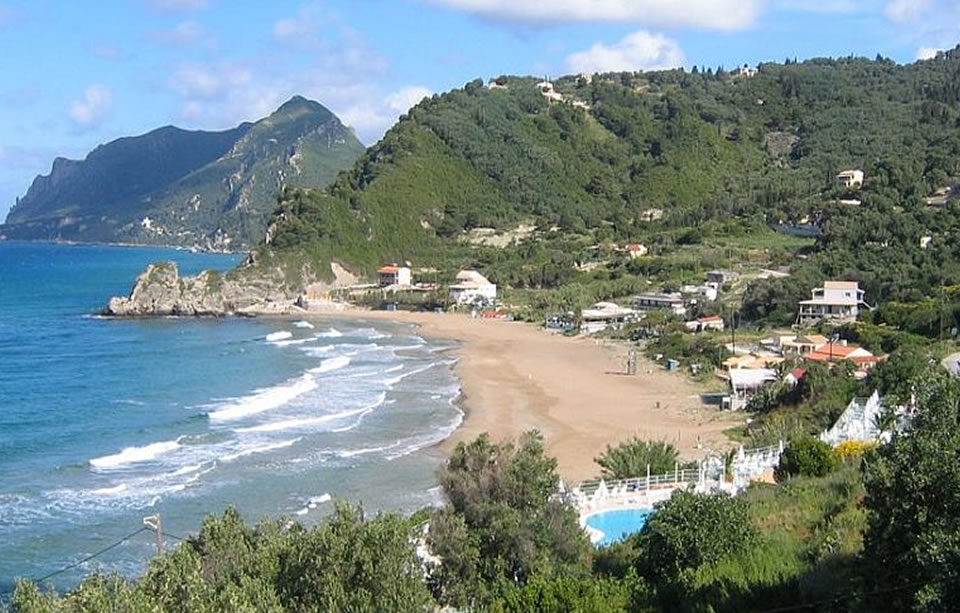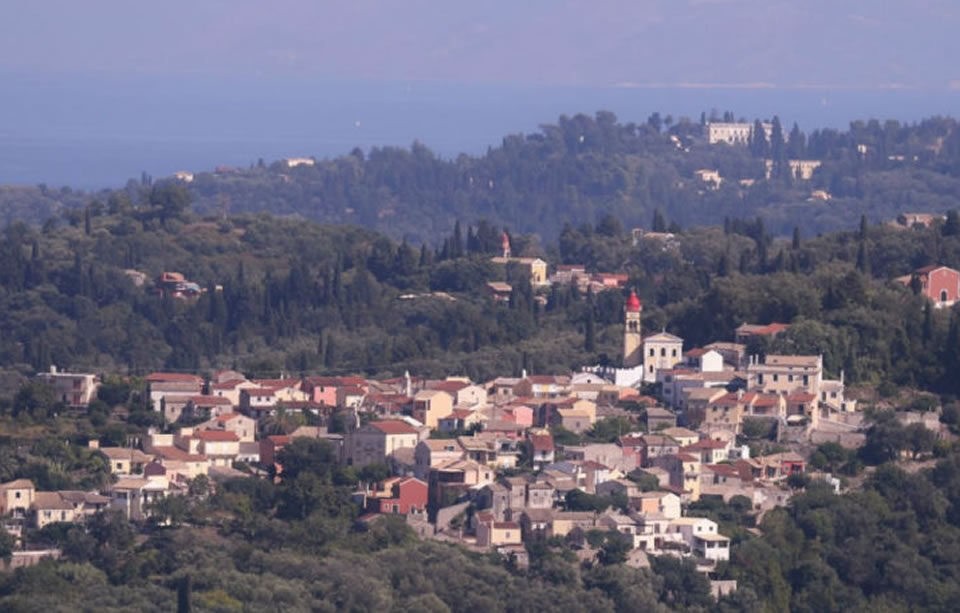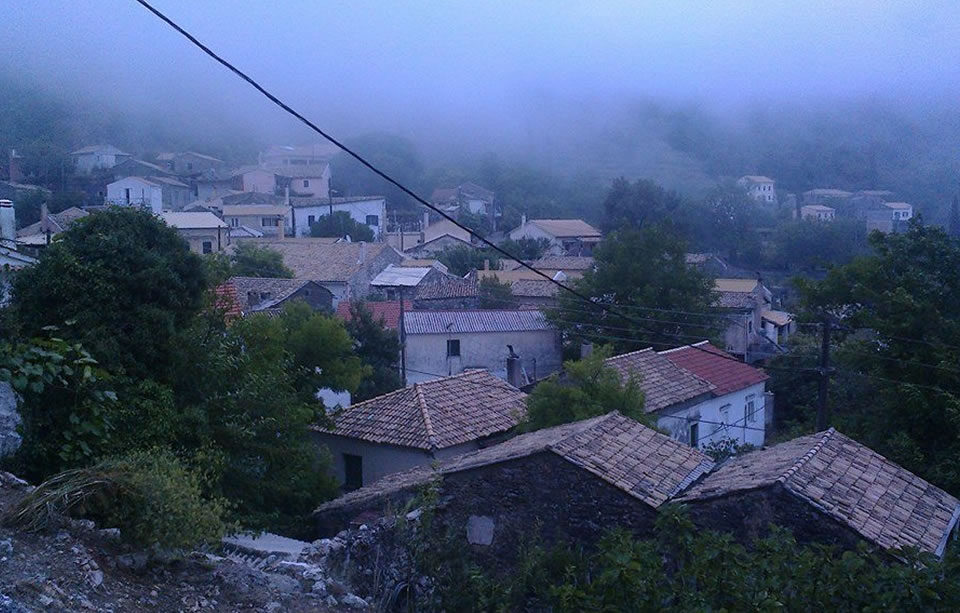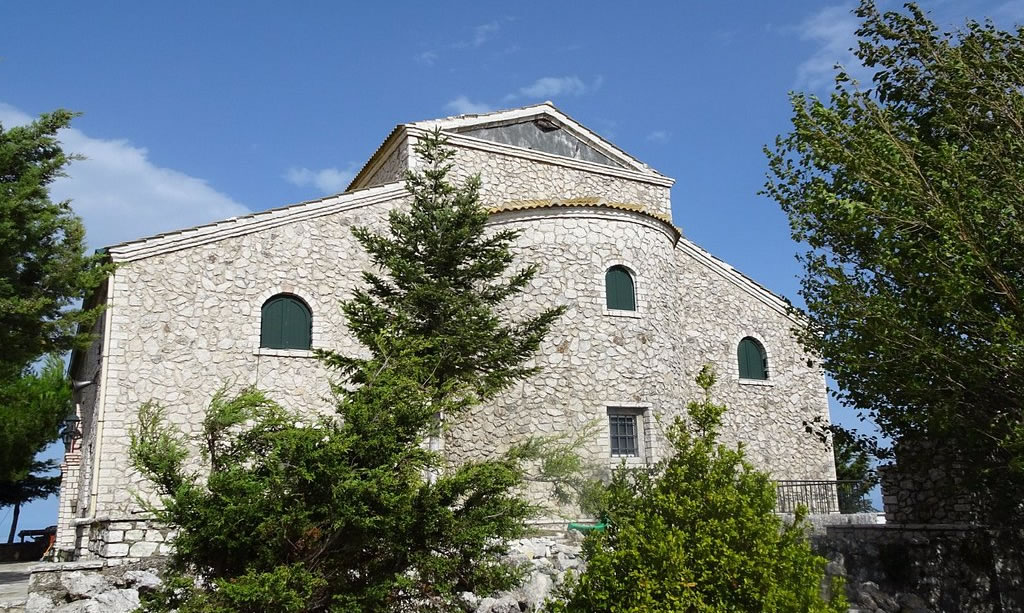
Pantokratoros monastery
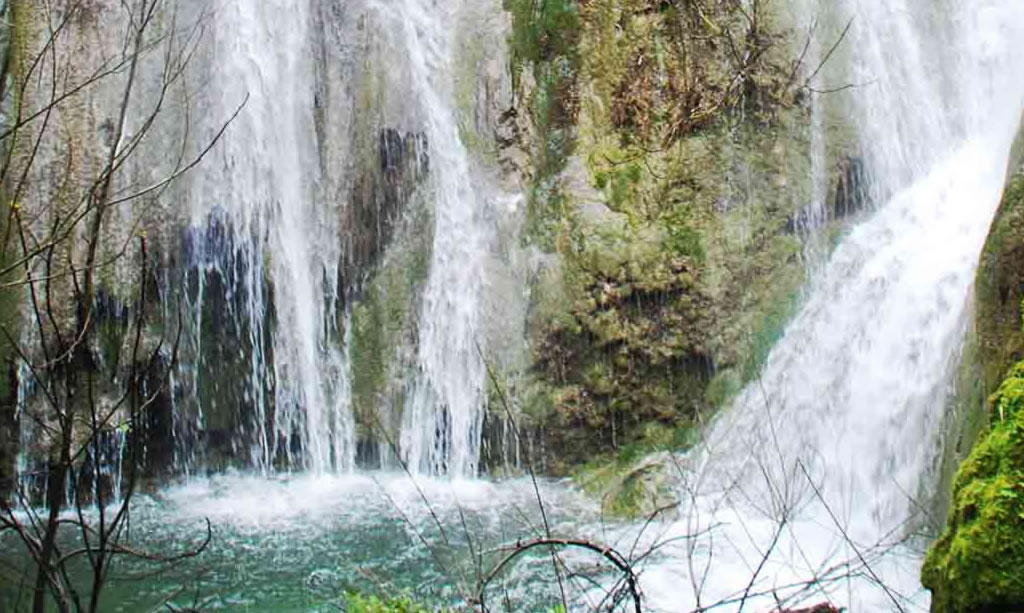
Nymfes
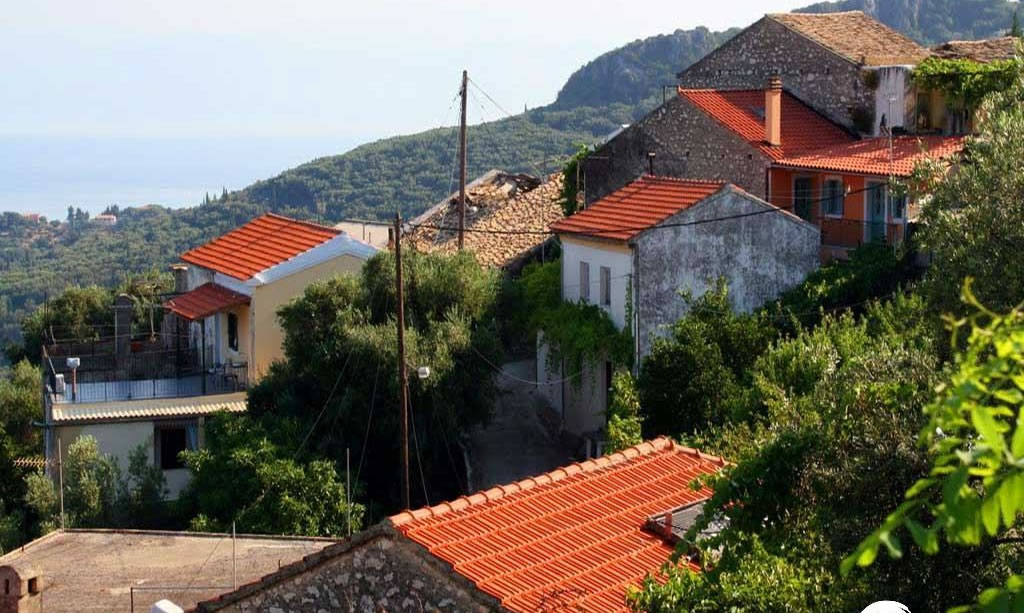
Episkepsi, one of the villages of Oros, is amphitheatrically built at an altitude of 360 m on the slopes of Pantokrator and has incredibly hospitable people, handsome and open-hearted. It owes its name to an administrative division of the Byzantines.
1.How many residents does the village have?
The Community of Episkepsi consists of two settlements: the mountainous settlement “Episkepsi” with 332 inhabitants and the coastal settlement “Agios Stefanos” with 205 inhabitants.
2.What jobs do the residents do?
The residents are mainly olive producers, but of course they also deal with tourism, seasonally, like almost all Corfiots.
3.What products are produced in the area?
Olive oil is produced in our area. But also edible olives, cheese from goat-sheep milk and vegetables: potatoes, tomatoes etc. In recent years some people produce honey. Most households make their own wine, mainly kokkineli.
4.Is there someone who sells products?
Almost all the inhabitants of the mountainous settlement, Episkepsi, sell oil. The other products produced in the village are in very small quantities and are usually consumed by the family and friends themselves. It is more common for Episkepsi residents to treat, rather than sell.
5.If yes, is the point of sale visitable and how many people can it accommodate?
There is no specific point of sale.
6.Are there vineyards in the area?
There are still vineyards in the area, but not in large areas. They are mainly planted in the fences of the olive groves or in the form of a vineyard.
7.If yes, what varieties are cultivated?
Our varieties are black skopelitiko, matdzavi, kakotrygi, a little muscat, strawberry and other less known.
8.Is there a lake, river or waterfall?
With the many waters of the rain in the winter, small waterfalls are sometimes formed, but they disappear very quickly and do not present particular interest. However, at a very short distance, about 3.5 - 4 km, are the beautiful waterfalls of the Nymphes.
9.Is there a point with acoustic peculiarity [e.g. reed bed, ravine, stream with nightingales etc]
The whole village, as it is amphitheatrically built, has very good acoustics. The forest “Skepasto” above the village and the area “Megas Lakos” are of particular interest, as one can hear all the sounds of nature.
10.Around the village what animals are there, what season and at what points?
Birds,
Reptiles,
Otters, rabbits, foxes
Frogs etc
Birds and reptiles, rabbits and foxes are all around the area.
11.The vegetation of the area includes what season and at what points?
Flowers
Edible [cabbage, mushrooms, tea, chamomile, oregano, caper, figs etc]
Trees and shrubs
The vegetation of the area is very rich. The olive grove is endless, and the abundant cypresses give their own color. All kinds of wildflowers, sage and oregano, myrtles, mulberries and oak trees, figs of various varieties, walnuts and almonds, mushrooms and blackberries
12.How many churches are there and which ones?
The Holy Temple of the Virgin Mary Odigitria and the Holy Temple of Saint Basilios with its famous square in the form of an amphitheater, are the largest. The Holy Temple of the Archangels and the Holy Temple of Saint Nicholas which is also the Cemetery. And the chapels of the Holy Apostles and the Ascension. Finally, the Holy Temple of Saint Stephanos, from which the coastal settlement took its name.
13.Is there a festival, procession or other event and when?
On Thomas Sunday, like in most villages of the Mountain, there is a Procession of the Holy Icon of the Virgin Mary and the Resurrection of the Lord. In the afternoon there is (usually) also a festival. Cultural events that end with the traditional festival of the Virgin Mary on August 15th, take place from the 11th to the 15th of August. One of the most famous and unique customs though is “The Dance of the Elders or Glory to…” on Cheesefare Sunday (Tsi strines as they say in the village) but also the traditional Carols of Lazarus on the Friday before his feast. All customs gather crowds and are organized by the Cultural Association of the village.
14.Where does the water in the area come from?
The water comes from the central water supply network, it is drinkable and of very good quality.
15.Are there public springs or taps with drinking water?
Stone tap with drinking water in the location “Megas Lakos”
16.Is there a point of historical interest?
-
17.Is there any bridge, threshing floor, olive press or other point of interest?
There are two olive mills. The “Mansion”, the churches but also the whole settlement with its narrow alleys and stairs, are the sights of the mountain village. The Roman Baths of the 5th century AD, an archaeological site, and the Folklore Museum are in the coastal settlement of Agios Stefanos and are worth visiting.
18.Did someone famous live or pass through here?
The unforgettable Tasos Dimitras, painter, lived and created in the village. The composer and singer Giannis Dimitras, was born and raised here. He became famous, representing Greece in the Eurovision song contest in 1981, achieving one of the highest positions our country has taken, the eighth.
19.Is there anyone from the village who became famous elsewhere?
-
20.Do you remember a story from the old days that your grandmothers used to tell you?
The legend says: “The Red, was a lord. His house, bright and stately, opposite the big church of the Virgin, at the top of the village. If the Red did not go to church on Sunday, to stand at the Despotic and make a signal by hitting his cane three times on the stasidi, the priest stood vested at the Holy Bema but no incense was put. Once, the Red, hid in his house a wanted relative of his. Early Sunday morning, the priest climbed the bell tower of the Virgin and began to signal for the liturgy. The wanted man, thinking that the bells were signaling for someone to come and arrest him, took his gun and killed the priest from the window of the mansion on the bell tower. Since then, everyone in the village knows that the “house of the Red”, is haunted…” The narration was made by Mr. Stamatis Dendias
21.Is there a special custom?
The Carols of Lazarus, especially and uniquely. The liturgies, on official days, accompanied by the “Choir of Episkepsi”.
22.What food do you usually eat?
Pastitsada, like all Corfiots on Sundays, bourdeto with plenty of hot pepper and all kinds of traditional pies: cheese pie without phyllo, zucchini pie (with spourda or zucchini), cod pie, artichoke pie, chicken pie, meat pie. Also cod bianco, canned cod and calamari with pastitsada pasta.
23.Is there a local peculiarity in your cooking [e.g. neratzosalata]?
The Episkepsi pies are special as they have phyllo only underneath which they twist at the edges and call it “petouro” with all kinds of ingredients for filling: spourda, cod, meat, artichokes etc. The “savouro”, they usually treat it to the people who say the Carols of Lazarus. It is fish, marides or bopes, fried and marinated with vinegar, fresh garlic and onions, rosemary and black raisins. They also do it on the Annunciation and the Vagiones (the Vaios)
24.Is there a cultural, musical, dance, theater or other association?
The Music Cultural Drama Association of Episkepsi “Orpheus”. In the past, there was also the Women’s Cultural Association, but over time they merged.
25.If yes, what actions does it have and when do they take place?
The festivals and events mentioned above. Twice a year there is a voluntary blood donation, as the Music Association is one of the first to establish and maintain a Blood Bank.
26.What would you like the foreigner to know about you?
I would like him to know that Episkepsi, one of the villages of the Mountain, is amphitheatrically built at an altitude of 360 m. on the slopes of Pantokrator and has incredibly hospitable people, melodious and open-hearted. Its name, according to one version, owes it to an administrative division of the Byzantines. There are three grills with very good food for the locals and visitors. Finally, from March to October, it has the most beautiful sunset, as the sun dives into the Ionian, between the Diapontia islands “Othonoi” and “Ereikoussa”.

